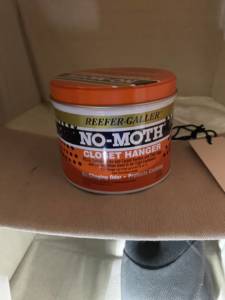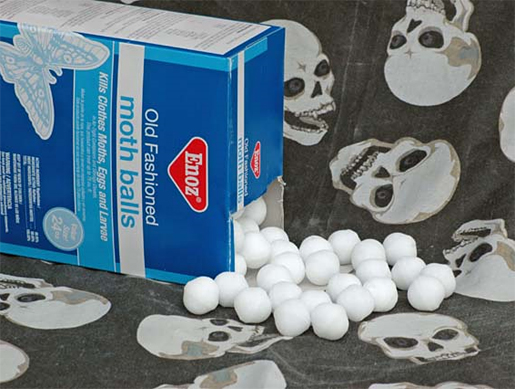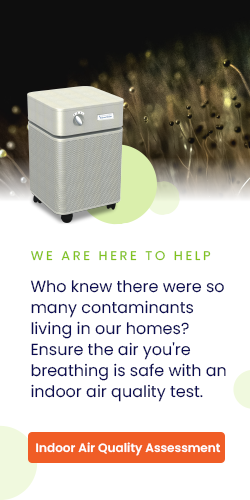We have been using Mothballs for decades to protect clothing from unwanted pests. Although common, mothballs are actually classified as a pesticide because they’re made of naphthalene or dichlorobenzene. In more recent times, we’ve come to find that these chemicals are toxic to humans and pets. Living in close quarters with these chemicals can be harmful to you and your loved ones’ health. Here’s what you need to know about their impacts, as well as what to do about it.

Why Are Mothballs Harmful? Are Mothballs Toxic?
Mothballs are essentially small balls of chemicals and deodorant, which we typically use to drive away moths or other pests from natural fibers, especially wool. Although we refer to them as mothballs, they are available in other forms, like crystals, flakes, cakes, and blocks. You can also find them in cans, packets, and cases. If you’ve ever come near a mothball, you know the scent. They have a distinct pungent smell, sometimes described as acrid or like camphor.
Toxic Odor
As you take in this scent, you might not realize that you’re also breathing in toxic chemicals. Mothballs are effective because their active ingredients, either naphthalene or dichlorobenzene, vaporize at room temperature. The chemicals you’re breathing in are the same that kill the pests you want to get rid of.
Naphthalene is a hydrocarbon that we extract from crude oil or coal tar. We also use it to make plastic, resin, dye, and fuel. Dichlorobenzene, meanwhile, is a chlorinated volatile organic compound (VOC), that we use as a deodorizer in toilets and diaper pails, or as an animal repellant against mice, rats, snakes, bats, squirrels, and more. These chemicals may sometimes be hard to spot, as their names can appear differently on products. Dichlorobenzene is also known as para-dichlorobenzene, and can be referred to as p-dichlorobenzene, pDCB, or PDB.
Exposure to these chemicals can be harmful whether you breathe in the vapors or touch them directly with the skin. They are also harmful if ingested, which typically happens accidentally. For example, if you fail to wash your hands after touching a mothball and then handle food. Children or pets may even mistake mothballs for food, which can have serious health effects.
The Dangers of Naphthalene and Dichlorobenzene
Naphthalene and dichlorobenzene can have many negative impacts on your health, including:
In particular, naphthalene can cause more severe conditions, like hemolytic anemia. This is a disorder in which you have a lower-than-normal amount of red blood cells because the body is destroying them faster than it can make them. Extended exposure to mothballs can even cause liver and kidney damage.
What NOT to Burn in your Fireplace or Wood Burning Stove
Health Risk
There is also a greater health risk for children. Since mothballs looks like candy, children sometimes accidentally eat them. If the child isn’t under constant supervision, you may not even know that the child consumed a mothball. About 4,000 children are exposed to mothballs each year, with 600 of those cases requiring medication attention. A key indicator that your child has consumed a mothball and needs medical attention is jaundice, which you can spot by looking for yellow skin. Plus, even if you don’t consume them, the fumes from mothballs are heavier than air. This means they sink to the floor and accumulate, putting both children and pets at risk.
Cancer Causing
On top of these health effects, we consider naphthalene a possible carcinogen, which means that it may cause cancer in humans. For example, asbestos is a known carcinogen, and exposure to it is strongly linked to lung cancer. While we consider naphthalene as a possible carcinogen, it’s important to know that it may have more serious health implications.
Storage Problems
Per package directions, mothballs should only ever be in tightly closed containers, although even these containers may release vapors. Mothballs are particularly dangerous because they are often used incorrectly. They shouldn’t be placed in closets, storage chests, trunks, garment bags, basements, or attics. In these closed-off areas, gasses from the mothballs can accumulate at high levels, making it even more dangerous for you to come into contact with. People sometimes put mothballs outside to repel rodents or other unwanted pests, but the mothballs can contaminate the water and soil.
Austin Air Purifiers Removes Odors Safely
Additionally, mothballs are a fire hazard. Naphthalene is highly flammable, which is why dichlorobenzene in many more modern mothballs has replaced it. However, both chemicals have the same NFPA 704 code for flammability. The vapor that comes off of mothballs and kills pests is flammable, making them a serious fire hazard. This is something to consider before placing mothballs in your home.
If you truly need something to protect your clothing from moths and other unwanted pests, try using cedar chips instead. Be sure to wash any clothing in contact with mothballs before wearing it.
How to Test for Naphthalene or Dichlorobenzene
Since mothballs release vapor, the chemicals remain even when you remove the mothballs themselves. Although they are safer when in cans, there is still a danger of the chemicals leaking out into the air. So how can you know for sure whether you have naphthalene or dichlorobenzene contaminating the air in your home? The best way to find out is by testing the chemical levels.
IndoorDoctor can detect the total chemical levels in your space with photoionizing detectors (PID) down to parts per billion. Our advanced chemical testing can even identify the specific chemicals and their sources. We can service you regardless of where you live in the U.S. by using our remote testing capability. You’ll take a sample of your indoor air, and we take care of the rest in our laboratory. Once we determine what chemicals are in your home, we can recommend an action plan to clean your air.
Keep Your Space Healthy
Since most people spend 90% of their time indoors, it’s important to make sure that the air you’re breathing is safe for you and your loved ones. Air pollution from mothballs can cause mild effects, like headaches and eye irritation, as well as more severe effects, like anemia and potentially even cancer. The unfortunate reality is that many homes have air pollution, whether from mothballs or other contaminants. The EPA reports that 6 out of every 10 homes and buildings are sick, meaning that they have airborne pollutants that are hazardous to your health. If you’re concerned about your home’s air quality, fill out our contact form or call us today at 800-466-1522. We’re here to ensure that you can breathe easily, knowing that your air is safe.






